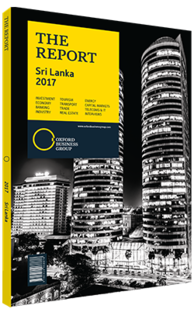Jayantha Karunaratne, Chairman, Tea Exporters Association: Interview

Interview: Jayantha Karunaratne
What impact have falling tea prices and lower output had on the tea industry?
JAYANTHA KARUNARATNE: The slide in tea prices began in around March 2014 and was due to a number of factors. These included sanctions on Russia, falling oil prices and the escalation of conflict in the Middle East. From around July 2016 tea prices began rising when crop shortages were reported due to a long dry spell, low application of fertiliser and a ban on weedicide. At the end of 2016 the shortfall was 36m kg compared to 2015. The crop shortage triggered an increase in prices, but producers were unable to reap the full benefits due to low production. About two-thirds of our tea production comes from smallholders and around one-third from plantations. It has been reported that cost of production has gone up, particularly in the plantation segment due to low volumes. Since the anticipated rainfall was not experienced in many tea growing districts, the January 2017 tea crop declined to 21.2m kg, a drop of 3.8m kg compared to the same month in 2016. If favourable weather conditions prevail, an improvement in the quantities can be expected from the second quarter of the year onwards only.
In what ways can tea marketers and producers work to cultivate new markets for export?
KARUNARATNE: China, India, the US and Iran have been identified as the fastest growing markets for tea in the coming years. The overall demand for all types of tea would increase in the short to medium term and the retail value of the hot tea market is expected to go up from the current $40bn and reach $45bn by 2020. Sri Lanka tea exporters have been looking at new markets for some time and China – the largest producer of tea in the world – has been targeted. Ceylon black tea is at the top end of the Chinese tea market and many Sri Lankan brands have successfully gained market share there. Sri Lanka exported 7.6m kg of tea to China in 2016 and with the proposed free trade agreement between the two countries, the volume could reach 20m kg in about five years’ time. The US is another growing market for Ceylon tea. Though iced tea consumption accounts for about 80% of the tea market, the recent influx of Asian and African immigrants has increased demand for hot tea. In 2016 Sri Lanka exported 5.2m kg of tea to US markets of which 65% were in a pre-packaged form.
The high price of Ceylon tea prevents us from penetrating into some markets or market segments. Today retail sales in most countries are controlled by large supermarket chains and brand loyalty is more important than the origin of tea. One way of addressing this issue is by liberalising tea imports and allowing the brand owners to decide on the right product mix. The Tea Exporters Association has been lobbying for the opening up of tea imports, but without success due to objections from certain stakeholders. A more liberalised tea import policy would enable the Sri Lankan brands to capture more of the market share and increase revenue from the industry.
Product diversification is another area we have to look at. Many tea exporters are exporting flavoured tea, tea extracts, and ready-to-drink teas in order to break into new markets and the government should be supporting research and development in these areas.
How can stakeholders in the tea business tap into opportunities in the tourism sector?
KARUNARATNE: Sri Lanka is a major tourist destination for China, India, the UK and Germany. The Tourist Promotion Development Authority participates in many travel fairs in these countries and the Sri Lanka Tea Board should join them to promote Ceylon tea. Tourism activities can help to promote Ceylon tea among visitors. Most plantation companies have introduced guided tours of tea factories and those tourists take back good memories of Ceylon tea. Quite a number of tea factories have sales outlets offering tourists garden fresh teas in order to promote their product.
You have reached the limit of premium articles you can view for free.
Choose from the options below to purchase print or digital editions of our Reports. You can also purchase a website subscription giving you unlimited access to all of our Reports online for 12 months.
If you have already purchased this Report or have a website subscription, please login to continue.

